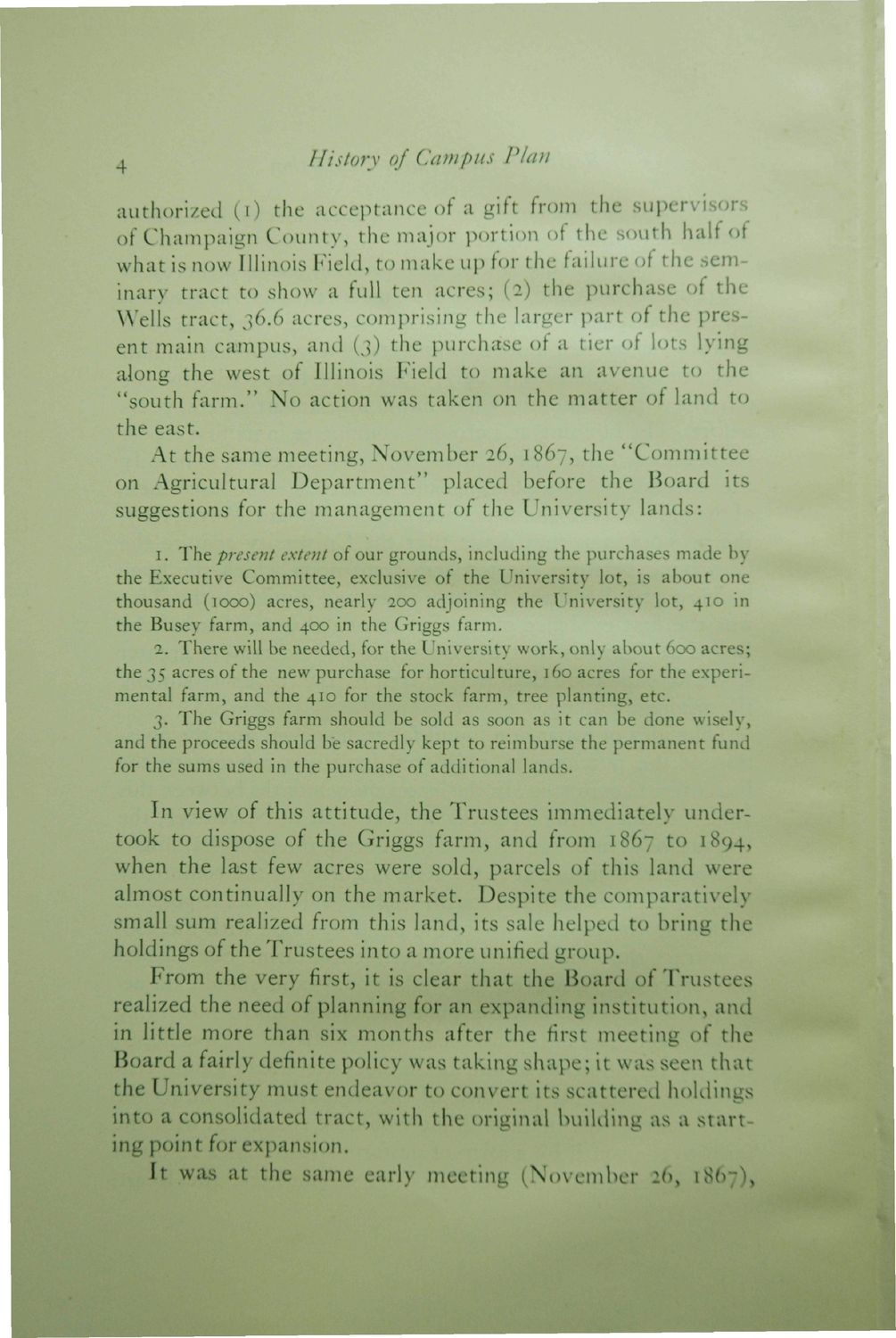| |
| |
Caption: Book - 30 Year Master Plan (Tilton & O'Donnell)
This is a reduced-resolution page image for fast online browsing.

EXTRACTED TEXT FROM PAGE:
4 History of Campus Plan authorized (i) the acceptance of a gift from the supervisors of Champaign County, the major portion of the south half of what is now Illinois Field, to make up for the failure of the seminary tract to show a full ten acres; (2) the purchase of the Wells tract, 36.6 acres, comprising the larger part of the present main caimpus, and (3) the purchase of a tier of lots lying along the west of Illinois Field to make an avenue to the "south farm." No action was taken on the matter of land to the east. At the same meeting, November 26, 1867, the "Committee on Agricultural Department" placed before the Board its suggestions for the management of the University lands: 1. The present extent of our grounds, including the purchases made by the Executive Committee, exclusive of the University lot, is about one thousand (1000) acres, nearly 200 adjoining the University lot, 410 in the Busey farm, and 400 in the Griggs farm. 2. There will be needed, for the University work, only about 600 acres; the 35 acres of the new purchase for horticulture, 160 acres for the experimental farm, and the 410 for the stock farm, tree planting, etc. 3. The Griggs farm should be sold as soon as it can be done wisely, and the proceeds should be sacredly kept to reimburse the permanent fund for the sums used in the purchase of additional lands. In view of this attitude, the Trustees immediately undertook to dispose of the Griggs farm, and from 1867 to 1894, when the last few acres were sold, parcels of this land were almost continually on the market. Despite the comparatively small sum realized from this land, its sale helped to bring the holdings of the Trustees into a more unified group. From the very first, it is clear that the Board of Trustees realized the need of planning for an expanding institution, and in little more than six months after the first meeting of the Board a fairly definite policy was taking shape; it was seen that the University must endeavor to convert its scattered holdings into a consolidated tract, with the original building as a starting point for expansion. I t was at the same early meeting (November 26, 1867),
| |